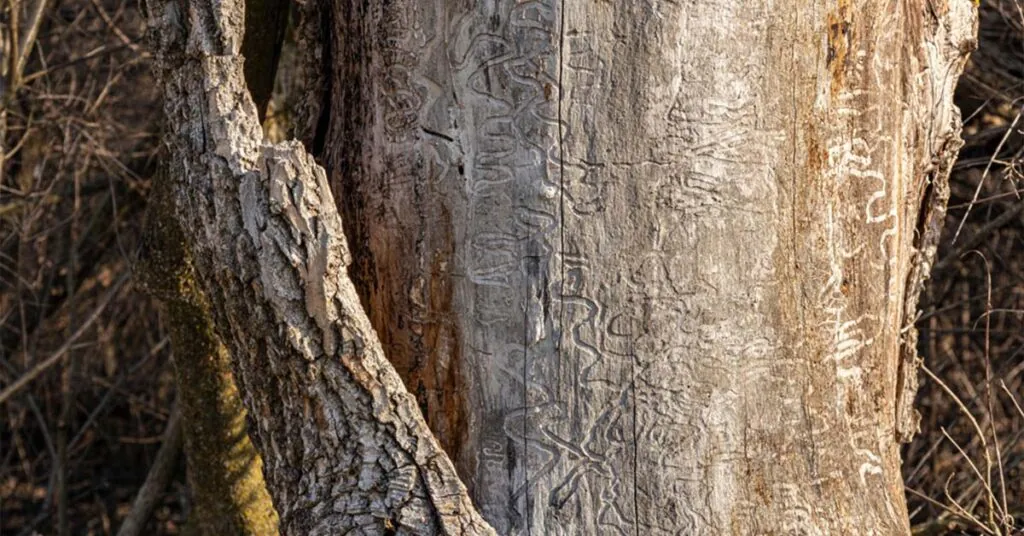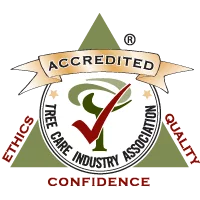As spring unfolds across Massachusetts, the threat posed by dead ash trees becomes increasingly urgent. With thousands of ash trees succumbing to the emerald ash borer (EAB), the landscapes we cherish are changing, bringing new challenges to property owners.
Understanding the Risk
Dead ash trees are an eyesore and, worse, a severe safety hazard. Unlike other trees that decay gradually, ash trees killed by EAB quickly lose structural integrity. Within just a few years, these trees become incredibly brittle, prone to breaking under minimal stress. This brittleness leads to limbs—or even entire trees—falling without warning, posing serious risks to people, property, and power lines.
Why Immediate Action is Essential
Emerald ash borer infestations are devastating because they cut off the tree’s ability to transport nutrients and water, swiftly killing the tree. Once an ash tree shows signs of EAB damage, it’s often too late to save it. The tree’s rapid decline in health can lead to sudden and catastrophic failures, especially during storm events, which are common in Massachusetts’ volatile spring weather.
Leaving a dead ash tree standing increases the hazard it poses. Municipalities may require removal of these trees to prevent them deemed as “hazard trees,” and many insurance policies will not cover damages caused by trees that property owners have neglected to remove.
Identifying Emerald Ash Borer Infestation in Ash Trees
Recognizing the signs of an emerald ash borer (EAB) infestation is crucial for early intervention and potentially saving ash trees that have not yet been irreversibly damaged. Here are key indicators that property owners should look out for in their ash trees:
- D-Shaped Exit Holes: One of the most telltale signs of EAB presence is the unique D-shaped exit holes that adult borers leave as they emerge from trees. These holes are typically 1/8 inch in diameter and can be found on the trunk and branches of an ash tree.
- Canopy Thinning and Dieback: EAB larvae feed on the inner bark of ash trees, disrupting the tree’s ability to transport nutrients and water. This leads to a thinning canopy, starting from the top and outer branches and progressively moving inward. Over time, the upper third of the tree may show significant dieback.
- Epicormic Shoots: As the tree’s health declines, it may begin to sprout new branches and leaves directly from the trunk or at the base of the tree. These shoots are the tree’s response to the stress caused by the infestation.
- Bark Splits: Vertical splits in the bark can occur due to the underlying larval galleries. These splits may expose the larval tunnels, which are packed with frass (sawdust-like excrement of the larvae).
- Increased Woodpecker Activity: Woodpeckers feed on EAB larvae located just beneath the bark. An increase in woodpecker activity on ash trees can be a sign of an infestation, as these birds peel off the bark and create large, visible patches in their search for food.
While treatments are available, such as systemic insecticides, they are most effective when applied early in the infestation. In cases where the infestation is advanced, or the structural integrity of the tree is compromised, removal might be the only safe option.
Challenges in Removal
Removing dead ash trees is fraught with dangers. The wood’s brittleness makes traditional climbing and cutting techniques risky. For this reason, many tree service companies are reluctant to remove dead ash trees using conventional methods. Instead, safe removal requires specialized equipment like bucket trucks, cranes, or backyard lifts. Such equipment allows the removal process to be handled from a distance, minimizing the risk to tree care professionals.
Choosing the Right Tree Service
When selecting a company to remove a dead ash tree:
- Opt for professionals who specialize in hazardous tree removal.
- Ensure the company is insured and follows strict safety protocols.
- Confirm that they use the appropriate equipment to safely handle the removal.
Iron Tree Service offers expertise in safely managing the removal of dead ash trees. Our team uses state-of-the-art equipment and adheres to the highest safety standards to ensure that these risky operations are conducted without endangering our staff or your property.
What to Do with the Wood
Once your ash tree is safely removed, deciding what to do with the wood is the next step. Here are a few options:
- Mulching: Chipped wood can be used as mulch in gardens, provided it is processed correctly to kill any remaining EAB larvae.
- Firewood: If you choose to keep the wood for firewood, ensure it is stored properly to prevent the spread of EAB.
- Recycling into Lumber: Larger sections of the tree can be milled into lumber for various uses.
Conclusion
The presence of dead ash trees is a significant concern for Massachusetts residents each spring. Addressing this issue promptly not only alleviates safety risks but also contributes to the overall health and aesthetics of your property. If you suspect that an ash tree on your property may be dead or dying, contact Iron Tree Service for a professional evaluation and safe removal. Ensuring your safety and maintaining the beauty of your landscape is our priority.




